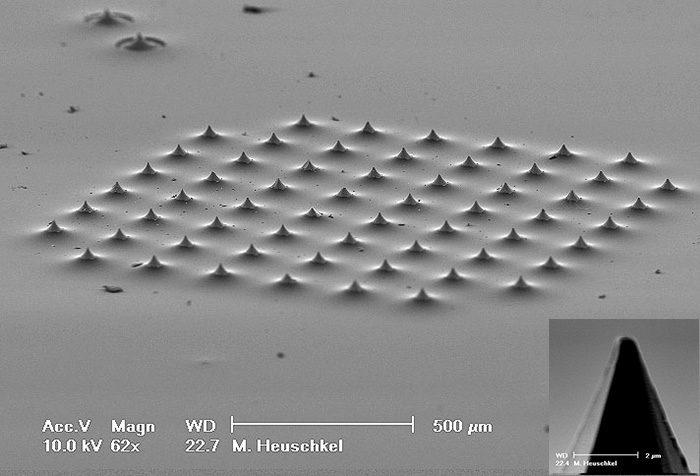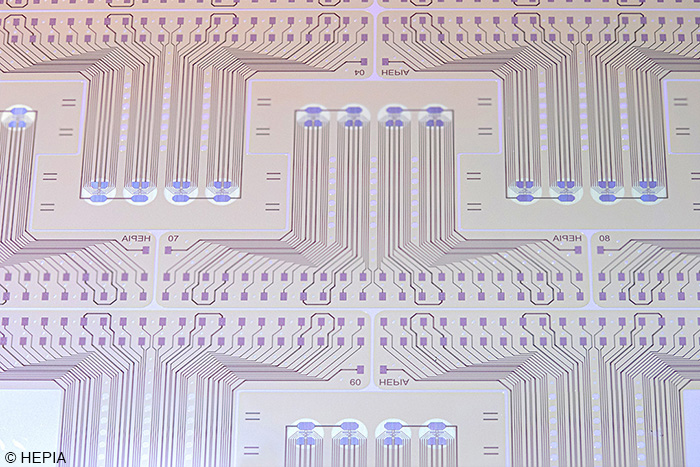Micro Electrode Array (MEA) Technology
MEA biochips are “smart” Petri dishes that consist of micro-fabricated platinum electrodes (planar or 3D tip-shaped) that allow the direct measurement of electrical activity from biological preparations.
MEA biochips are realised on small glass substrates using microfabrication technologies. In order to be compatible with commercially available signal amplification and data acquisition systems, our electrode arrays are mounted onto a Printed Circuit Board (PCB). A glass ring is used to create a culture chamber, which is sealed with a biocompatible sealant.

3D Tip-Shaped Electrodes
Our most famous products are the 3D tip-shaped MEA biochips that are particularly well suited for acute tissue slice preparations. The tip-shaped electrodes are able to penetrate through the initial outer dead cell layer arising from the slice preparation process, thereby enabling robust signals that come from recording healthy neurons in the interior of the slice. The tip shaped electrodes also allow more efficient electrical stimulation of the cells (M Heuschkel et al., J. Neurosci. Methods 114 (2002) 135-148).

Flexible and Porous MEA Devices
We also design and manufacture flexible and porous MEA devices based on polyimide polymer substrates. The resulting MEA biochips correspond to a thin polyimide membrane (thickness below 10µm) that integrates thin film platinum wires and electrodes. Holes etched through the whole thickness of the polyimide substrate provide a membrane porosity between 10% an 40% that allows its use with tissue samples at air-liquid interface. Polyimide based MEA biochips can be customised also for in vivo experiments.

